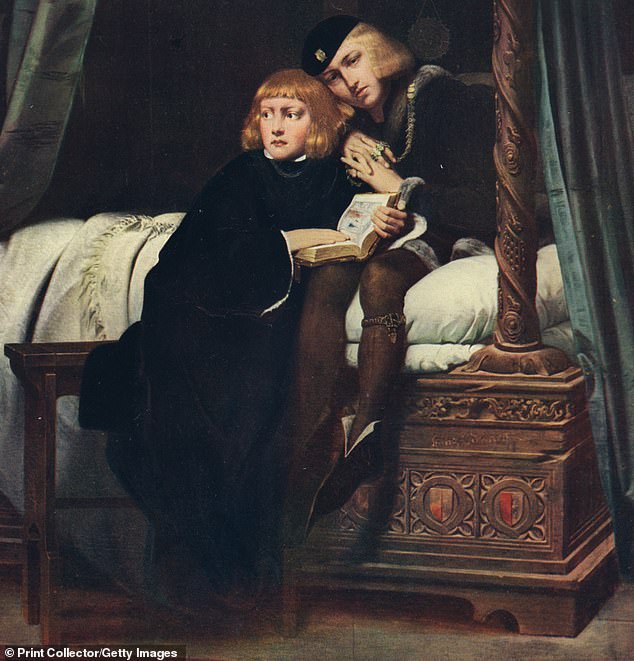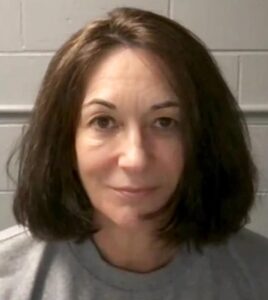
The historian who led the discovery of the remains of Richard III has claimed she has been blocked from presenting new evidence that the Princes in the Tower survived their imprisonment.
The 12-year-old King Edward V and his younger brother vanished in 1483, and their uncle Richard III has long been suspected of ordering their murders at the Tower of London.
But Philippa Langley, who was portrayed by Sally Hawkins in 2022 film The Lost King, has evidence that she believes proves the princes lived into adulthood.
The findings of her ‘Missing Princes Project’ – which involved hundreds of researchers – were first presented in 2023. They have been laid out in full in an updated version of her latest book.
However, Ms Langley has claimed Historic Royal Palaces – the body which cares for the Tower of London – have repeatedly turned down an approach by her to present her research.
The refusal was allegedly because the evidence would contravene their ‘universal line’ that links the princes’ disappearance in the Tower to Richard III.
Speaking of their organisation’s position, a staff member at HRP told Ms Langley: ‘In essence, they have a universal line that they have to stick by for the public facing staff.’
Reacting, Ms Langley insisted that her research proves the princes did not die soon after being imprisoned in the Tower, but her offers to present her evidence were ‘politely declined’.

The historian who led the discovery of the remains of Richard III has claimed she has been blocked from presenting new evidence that the Princes in the Tower survived their imprisonment

For centuries, the dominant belief has been that King Richard III had the boys murdered
She told MailOnline: ‘The Tower of London is at the centre of the centuries-old story about the Princes in the Tower.
‘The story it has delivered to the public has been one of murder most foul.
‘With the final results of the ten-year forensic investigation into this mystery by The Missing Princes Project research initiative now published, it has revealed the Princes lived on during the reign of Richard III and into the reign of Henry VII (Henry Tudor), becoming the two Yorkist claimants to the Tudor throne.
‘I contacted the Tower of London to present the project’s findings to its staff and Yeoman Warders.
‘After four failed attempts my offer was politely declined.’
She added: ‘The story of the Princes continued lives is a remarkable one. It gives the Tower and its Yeoman Warders a whole new story to tell.
‘Very much hoping they will pick up the gauntlet!’
An HRP spokesman insisted that they do not have a ‘universal line’ on the mystery.

Philippa Langley, the amateur-turned-professional historian who played a key role in the discovery of Richard III’s remains beneath a Leicester car park in 2012 claimed the evidence is ‘conjecture at best’. Above: Ms Langley poses with a reconstruction of Richard’s face, 2013
They said: ‘We believe that our job is to present the evidence and let people make up their own minds rather than to take a position ourselves on what happened to the “Princes in the Tower”.
‘We are very clear in our onsite signage and on our website that there are multiple theories about what may have happened to these young children.
‘Our aim is to present the history of all of our sites in a transparent and balanced way, informed by rigorous research conducted by our curatorial team.’
Ms Langley came to national attention in 2012, when her years of research culminated in the discovery of Richard III’s remains beneath a car park in Leicester.
King Edward V – who was never crowned – and his brother were the sons of Edward IV, who died in 1483.
After being declared illegitimate heirs by Richard III, then the Duke of Gloucester, the two princes were taken to the Tower of London and then vanished from the historical record.
The mainstream view has long been that Richard – who reigned for just two years before being killed in his forces’ defeat against Henry Tudor at the Battle of Bosworth – had them killed to remove any threats to his claim to the throne.
But it is accepted there is no definitive evidence to back up this claim.

Edward V – who was never crowned – and his brother were the sons of Edward IV, who died in 1483. Above: A 19th century depiction of the murder of the princes
Documents unearthed by Ms Langley’s team suggested that Edward and his brother Richard, the Duke of York, escaped the Tower and then became Yorkist claimants to the throne – respectively Lambert Simnel and Perkin Warbeck.
Both are known to have launched failed attempts to depose Henry VII.
Edward was said to be Simnel, who was the central figure in the 1487 Yorkist invasion of England.
Warbeck, who had initially claimed to be Richard, failed in a bid to claim the throne and then signed a confession in 1497 admitting he was a boatman’s son.
Ms Langley and others insist this was a false confession.
She says her evidence proves that Edward and Richard were lumbered with the identities of Simnel and Warbeck by Henry VII to discredit them.
Her team unearthed a 1493 witness statement said to have been written by Richard that stated he and his brother were separated in the Tower before two men ‘swore by honour and oath to hide me secretly until certain years were past.’
Written in the first person in Middle Dutch, the statement described how Richard was smuggled from the Tower of London by brothers Henry and Thomas Percy.

A witness statement from 1493 said to be by Prince Richard, Duke of York, who was nine when he disappeared with his brother in 1483. It tells how they were separated in the Tower before two men ‘swore by honour and oath to hide me secretly until certain years were past’. The document was unearthed by Philippa Langley’s Missing Princes Project
His hair was allegedly shaved and he was given a ‘drab’ shirt before being taken by boat to France and then on to Portugal.
Another unearthed document, dated to 1493, is written by a scribe in French from King Maximilian’s court.
It outlines why Maximilian, the leader of the Holy Roman Empire, believes the young man in the witness statement is Prince Richard.
It describes three distinctive birthmarks on the young man’s body.
A third document is from Holland, dated 1483, which appears to bear a royal seal and a signature of a ‘Richard, Duke of York’.
It promises that Richard will pay 30,000 florins to Duke Albert of Saxony after gaining the English throne.
A man claiming to be Richard landed in England with a small army in the hope of gaining the throne.
When an initial attempt failed, he fled to Scotland and then launched another bid in 1497.

Another document is from Holland, dated 1483, which appears to bear a royal seal and a signature of a ‘Richard, Duke of York’. It promises that Richard will pay 30,000 florins to Duke Albert of Saxony after gaining the English throne
Having been captured, he signed a confession where he declared that he was really Warbeck.
Another piece of evidence identified by Ms Langley is a receipt for weapons for the ‘son of King Edward IV’ for the 1487 Yorkist invasion of England, of which Simnel was the figurehead.
Simnel was crowned as ‘Edward VI’ in Dublin as part of the uprising.
Ms Langley believes the evidence of the Missing Princes Project suggests he actually was Edward.
The update to Ms Langley’s book, The Princes in the Tower: How History’s Greatest Cold Case Was Solved, comes after a separate team found evidence that supported the most popular narrative – that Edward and Richard were killed.
In Channel 5 programme The Princes in the Tower: A Damning Discovery, which aired last December, historian Tracy Borman was seen examining a will that featured what was believed to be the young Edward’s chain of office among its bequests.
Lady Margaret Capell – the sister-in-law of one of the princes’ alleged murderers – gave what she said was Edward’s gold chain to her son.
According to Thomas More – the Lord Chancellor of King Henry VIII – her brother-in-law Sir James Tyrell played a key role in the deaths of the princes.

In Shakespeare’s play Richard III, the Machiavellian royal sends for his two nephews to be killed in the Tower of London (pictured) to get closer to the throne
Professor Borman described the mention of the chain of office as a ‘smoking gun’.
The will, which dates back to 1522, was found at the National Archives by academic historian Professor Tim Thornton.
It read: ‘Also, I bequeath to my son, Sir Giles, his father’s chain which was young King Edward the V’s.’
Professor Thornton presented his findings in a research paper published in the journal History, but critics remain unconvinced.
It remains unclear how Lady Margaret, who was the widow of Sir William Capell, the two-time lord mayor of London, came into possession of Edward’s chain.
Tyrell was one of three brothers-in-law of Sir William. And the latter man’s own will refers to business dealings with the Tyrells. They are know to have exchanged jewellery.
Sir James was a member of Richard III’s royal household.
At the time Channel 5’s programme aired, Ms Langley said the findings were ‘conjecture at best’.






